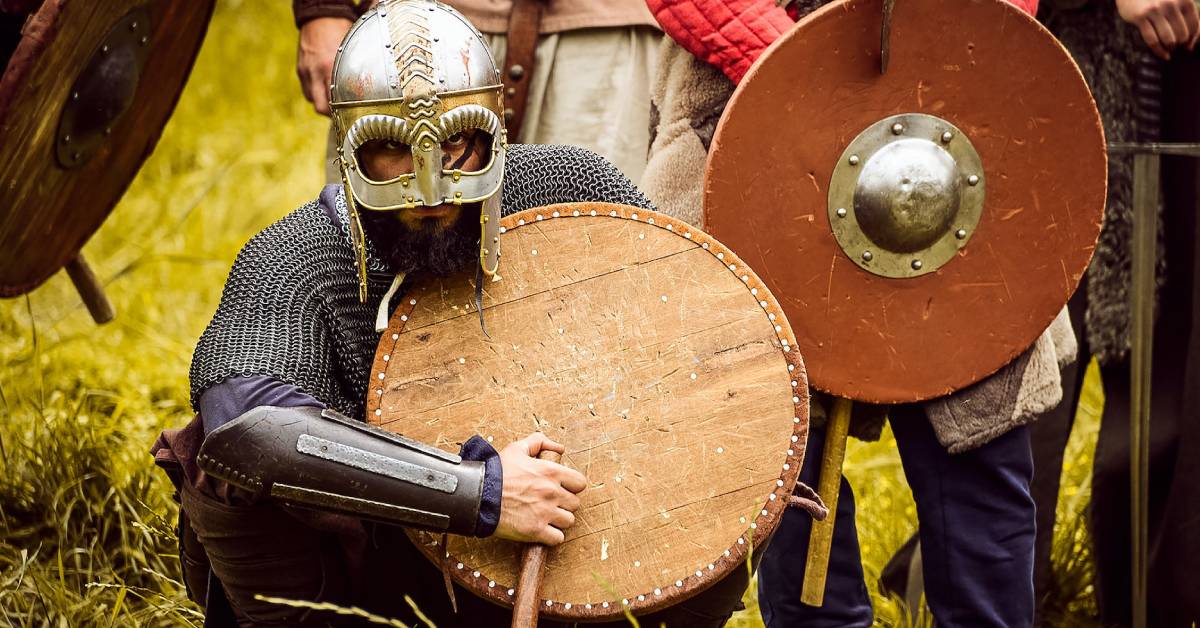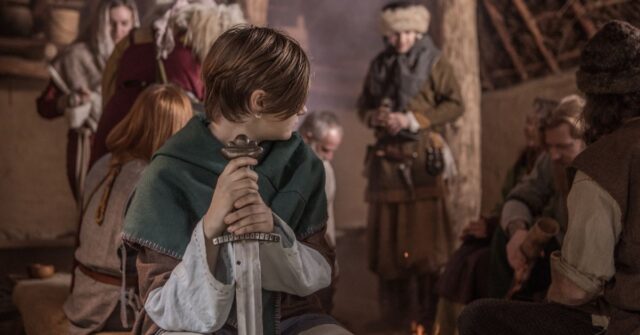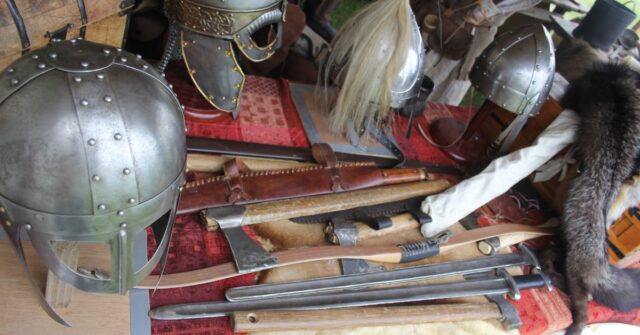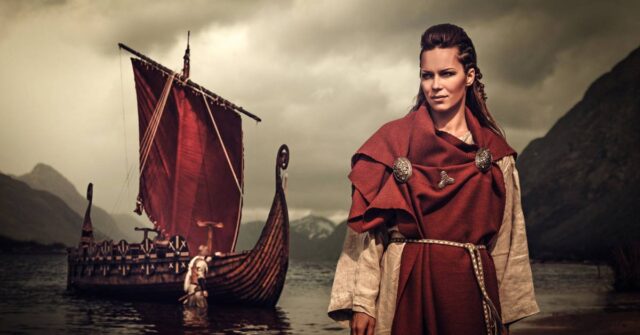In this article, we will explore the social hierarchy in Viking society, focusing on the three main classes: Jarls, Karls, and Thralls. We will also examine the role of women, the influence of religion, law and order, and how the social hierarchy changed over time.
By understanding the structure and dynamics of Viking society, we can gain insights into the lives and experiences of the people who lived during the Viking Age.
Introduction to Viking Society
The Viking Age, which lasted from around the late 8th to the early 11th century, was a time of great change and expansion for the Norse people.
While they are often remembered for their raids and conquests, the Vikings were also skilled traders, farmers, and craftsmen. To fully appreciate the complexity of their society, it is essential to understand the social hierarchy that existed during this period.
Overview of the Viking Age
The Viking Age began in the late 8th century and was marked by the expansion of Norse people from their homelands in Scandinavia to various parts of Europe, including the British Isles, France, and Russia.
This period was characterized by significant cultural, economic, and political developments, as well as the infamous Viking raids that left a lasting impact on the regions they targeted.
Structure of Viking Society
Viking society was organized into a social hierarchy with clear distinctions between different classes. This structure allowed for the division of labour and the management of resources, which was crucial to the success of their communities.
In this article, we will focus on the three main classes: Jarls, Karls, and Thralls, as well as examine the roles of women and the influence of religion on the social order.
The Three Main Classes in Viking Society
The social hierarchy in Viking society was composed of three main classes: Jarls, Karls, and Thralls. Each class had its own distinct roles, responsibilities, and levels of power and influence.
In the following sections, we will explore each of these classes in detail.
Jarls: The Nobility
Jarls were the nobility in Viking society and held positions of power and influence. They were often landowners and military leaders, responsible for managing their lands and protecting their communities from external threats.
Roles and Responsibilities
As the ruling class, Jarls were responsible for overseeing the administration of their territories, ensuring the well-being of their subjects, and maintaining order within their communities.
They also led their people in warfare and held important positions in local assemblies and councils.
Power and Influence
Jarls wielded considerable power and influence within their communities, often through a combination of military might, wealth, and personal charisma.
They held the allegiance of the Karls and Thralls beneath them, and their authority was often passed down through hereditary lines.
Land Ownership and Wealth
The Jarls were wealthy landowners, often controlling vast estates and enjoying the profits from farming, trade, and taxation.
Their wealth enabled them to maintain a retinue of warriors and to support the construction of impressive longhouses, ships, and other symbols of power and prestige.
Karls: The Freemen
Karls were the freemen of Viking society, comprising the majority of the population. They were engaged in various occupations, such as farming, craftsmanship, and warfare.
Although they were subject to the authority of the Jarls, they enjoyed a certain level of freedom and independence within their communities.
Roles and Responsibilities
Karls were responsible for the day-to-day functioning of their communities, working as farmers, craftsmen, and traders to support their families and contribute to the local economy.
They also participated in the defense of their communities, serving as warriors when called upon by their Jarl.
Farmers, Craftsmen, and Warriors
Agriculture played a significant role in the lives of Karls, as farming provided the primary source of food and income for most Viking households.
Karls were also skilled craftsmen, producing goods such as textiles, pottery, and metalwork. As warriors, they were responsible for protecting their communities and participating in raids and conquests led by their Jarls.
Land Ownership and Wealth
Many Karls owned their own land, either independently or as tenants of a Jarl. This allowed them to support themselves and their families through farming, trade, and other endeavours.
While the wealth of Karls varied, they generally enjoyed a comfortable standard of living and had access to basic resources and services.
Thralls: The Slaves
Thralls were the lowest class in Viking society and were considered the property of their owners. They were typically captured in raids or obtained through trade and were forced to perform a variety of tasks for their masters.
Origins of Viking Slavery
Slavery was a common practice in Viking society, with slaves being acquired through raids, trade, or as a result of debt and criminal punishments.
The origins of Viking slavery can be traced back to the pre-Viking Age, with slavery being an established institution in various Germanic and Norse societies.
Roles and Responsibilities
Thralls were forced to work in a variety of roles, including agricultural labourers, domestic servants, and craftsmen. Their tasks could be physically demanding, and they were often subject to harsh treatment by their masters.
The conditions of their lives varied depending on the circumstances of their servitude and the attitudes of their owners.
Living Conditions and Treatment
The living conditions of Thralls varied depending on their roles and the households they served. Some may have lived in relatively comfortable conditions, while others endured harsh treatment and deprivation.
In general, they were considered property rather than people, and their rights and freedoms were severely limited.
Women in Viking Society
Women played an important role in Viking society, contributing to the functioning of their communities and the raising of the next generation. Their status and experiences were shaped by their social class and the cultural norms of the time.
Role of Women in Different Social Classes
The role of women in Viking society differed depending on their social class. While women of all classes were expected to contribute to the household and raise children, their specific duties and responsibilities, as well as their rights and freedoms, varied.
Women in the Jarl Class
Jarl women often enjoyed a higher status and greater autonomy than their counterparts in the lower classes.
They were responsible for managing their households, overseeing the education of their children, and often played a role in the political and economic affairs of their communities. Some women of this class were known to hold significant power
Women in the Karl Class
Women in the Karl class were primarily responsible for the day-to-day running of their households, including cooking, cleaning, and child-rearing.
They also contributed to their family’s livelihood by participating in farming, animal husbandry, and craft production.
While their rights and freedoms were more limited than those of Jarl women, they still played a crucial role in the functioning of their communities.
Women in the Thrall Class
Thrall women faced the harshest conditions and had the fewest rights and freedoms among the women in Viking society. They were subject to the same hardships as male Thralls, being forced to perform labour and serve their masters.
In addition to their work duties, they were often subject to sexual exploitation and abuse.
Rights and Responsibilities of Women
Women’s rights and responsibilities in Viking society were largely determined by their social class and the cultural norms of the time.
While they generally had fewer rights and freedoms than men, they were valued for their contributions to their families and communities.
Some women held significant power and influence, particularly within the Jarl class, and there are examples of women who defied traditional gender roles to achieve success and renown.
Religion and Its Influence on Social Hierarchy
Religion played a significant role in shaping the social hierarchy and cultural norms of Viking society.
The Norse pantheon of gods and their associated myths and beliefs provided a framework for understanding the world and the roles and responsibilities of different social classes.
Role of the Norse Gods
The Norse gods were central figures in Viking religious beliefs and were thought to influence various aspects of life, including fertility, warfare, and the natural world.
Key gods in the Norse pantheon included Odin, the chief god; Thor, the god of thunder; and Freyja, the goddess of love and fertility.
These gods were believed to have a direct impact on the lives of the people, and their worship was an important part of Viking culture.
Religious Practices and Beliefs
Viking religious practices and beliefs were characterized by a combination of rituals, sacrifices, and celebrations intended to honour the gods and ensure their favour.
These practices often reinforced the social hierarchy, as the gods were believed to have assigned different roles and responsibilities to the various social classes. In this way, religion served to legitimize and maintain the existing social order.
Influence on the Social Order
Religion played a key role in shaping the social order in Viking society, as it provided a divine justification for the division of labour and the distribution of power and resources among the different social classes.
By venerating the gods and adhering to their prescribed roles, individuals could expect to receive divine favour and protection, ensuring the stability and prosperity of their communities.
Law and Order in Viking Society
Law and order were important aspects of Viking society, ensuring the maintenance of social cohesion and the resolution of disputes.
Legal systems varied across the Viking world, but they were generally characterized by a combination of local assemblies, customary law, and established procedures for resolving conflicts.
Assemblies and Legal Systems
Local assemblies, known as “things,” were the primary means by which legal matters were addressed in Viking society.
These assemblies were gatherings of free men, usually led by a Jarl or other prominent figure, who came together to discuss and resolve disputes, make decisions on community matters, and establish or amend local laws.
The decisions made at these assemblies were considered binding and were enforced by the community.
Crime and Punishment
Viking society had its own system of crime and punishment, which was primarily focused on maintaining social order and preventing feuds between families or communities.
Punishments varied depending on the nature of the crime and the circumstances of the offender, ranging from fines and compensation to outlawry and even execution.
Restitution and compensation were common methods of resolving disputes, with the goal of restoring harmony and preventing further conflict.
Changes in Social Hierarchy Over Time
The social hierarchy in Viking society evolved over time as a result of various factors, including the conversion to Christianity, integration with other cultures, and the eventual decline of the Viking Age.
These changes had significant implications for the roles and experiences of different social classes within the Norse world.
Conversion to Christianity
The conversion to Christianity, which began in the 10th century, had a profound impact on Viking society and its social hierarchy.
Christianity introduced new ideas about social equality and the value of individuals, which challenged the existing social order and contributed to changes in the roles and expectations of different social classes.
Integration with Other Cultures
As the Vikings expanded their reach and established settlements in various parts of Europe, they came into contact with other cultures and societies, which influenced their own social structures and norms.
Integration with other cultures led to the adoption of new ideas, practices, and technologies, some of which had implications for the social hierarchy in Viking society.
Decline of the Viking Age
The decline of the Viking Age, which began in the 11th century, was marked by the gradual disintegration of the social hierarchy that had defined Norse society for centuries.
This process was influenced by various factors, including political changes, economic developments, and the increasing influence of Christianity.
As the Viking Age came to an end, the social distinctions between Jarls, Karls, and Thralls became less rigid and eventually gave way to new forms of social organization.
Conclusion: The Legacy of the Viking Social Hierarchy
The social hierarchy in Viking society was a complex and dynamic system that shaped the lives and experiences of the people who lived during the Viking Age.
By understanding the roles and responsibilities of the Jarls, Karls, and Thralls, as well as the impact of factors such as religion, law, and cultural change, we can gain a deeper appreciation for the richness and diversity of Viking society.
The legacy of the Viking social hierarchy continues to influence our understanding of this fascinating period in history, as well as our perceptions of the people who lived during this time.











